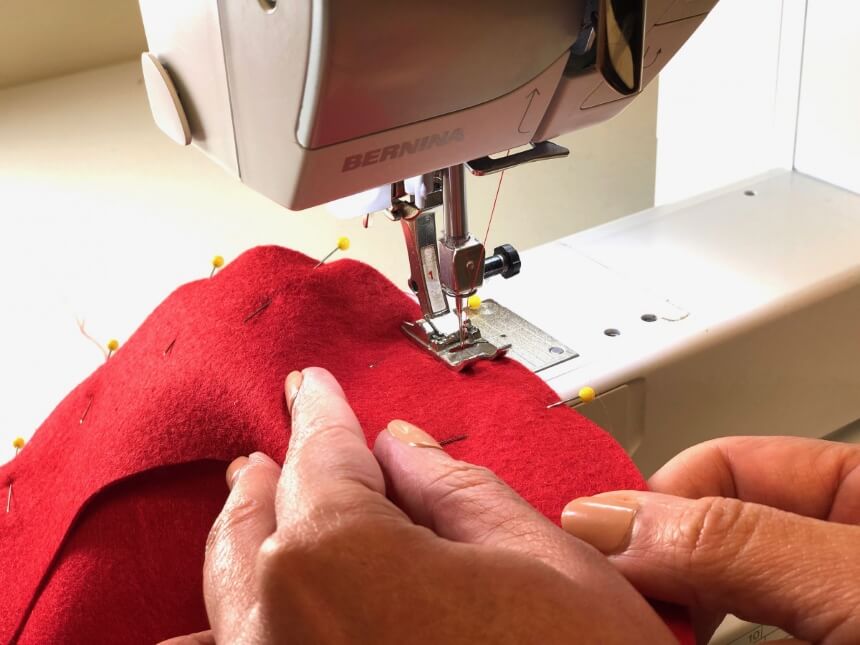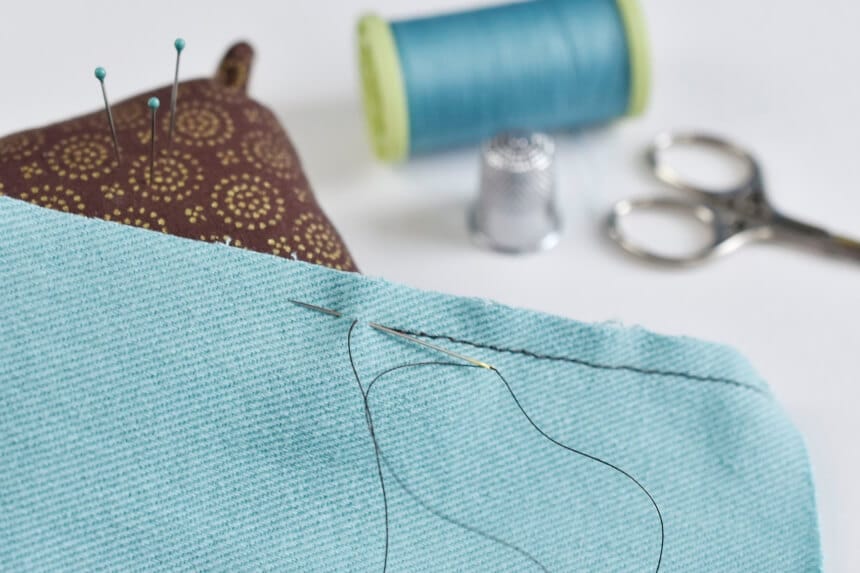

Whether you’ve just bought your first, brand-new sewing machine or you haven’t quite yet taken the one from your closet out of its storage space and put it to work, you might need a bit of help when it comes to learning how to sew.
But just like with anything in life—we can start with the absolute basics—how to sew a straight line. This very first step can be the most important stepping stone as you tackle much more complex projects later on down the line.
This very ground-based, foundational skill can help you improve your experience with the entire process—no matter how big or small, simple or complicated your sewing project is.
In this article, we’re not only going to help teach you how to sew a straight line by hand, with a sewing machine, and checking generator output, we’re going to go through every in-and-out, smallest thread detail that can possibly trip you (and tangle you up).

We’re going to now hone in on this particular skill and how to conquer it:
First and foremost, get a piece of fabric that you want to practice with—preferably not your dream project in the beginning. Basic cotton fabric works best since it’s much easier to work with.
Once you’ve chosen the fabric, thread the machine with the bobbin. After you’ve completed this (if you need help, check your manufacturer’s manual), then you’re ready to get sewing!
Need to learn how to sew a straight line with a sewing machine? It all starts with measurements.
The details are truly in the finer numbers when it comes to sewing. To help you work on measuring out fabric, start with scraps and testing different seam allowances to get your feel.
You should know what you feel comfortable with before you move on.
To help you keep it as effective as possible, make sure you know where the edge of your fabric is! This raw edge—in relation to the seam allowance—should always be perfectly (or to the best you can) aligned with your sewing machine foot.
This can change depending on if you’re right or left-handed. The design of your sewing machine can also pose a difference, since the outer edges of the sewing machine foot will change from machine to machine.
You don’t have to do everything off of pure memory or by visual cues—placing edge markings in your fabric can help you stay on track with your lines—and keep them as straight as possible.
Before you grab a permanent marker, it’s important that you remember that the color you choose will contrast with the fabric well—or else you might not even be able to see it!
Don’t be afraid to take that marker and draw a line right on the fabric! This can help you create that straight line you’re looking for to follow while learning how to sew and cut in a straight line.

Taking a look at the pins while you’re sewing can also give you the opportunity to catch any movement or inconsistency while you’re moving it about.
It also leaves you feeling more comfortable, since pinning it secures it together and allows you to concentrate on the sewing itself. If you get into creating patterns, learning how to work with pins is an essential first step.
Don’t let the fabric control you! Especially if you’re brand new to sewing, make sure you have a firm push down on your sewing machine thread so that you can have optimal control.
If you’re struggling with controlling the fabric, think about seam allowance—especially if you’re starting out with just a line and not an intricate pattern.
Just like with anything in life, you have to learn how to crawl before you walk—which is similar to sewing. You should start off with a slow sewing speed so you can get the hang of it and learn how to sew a straight line.
With a slower sewing speed, you also will have more control of the pedal and be more inclined to use it.
The reduction in sewing speed can also help prevent the fabric from shifting around while you’re working on it.
When first starting out to sew, here are four very important details that you should always look out for:
Make sure that you know (and feel comfortable with) where your point is on your sewing machine foot.
Make sure that you have drawn, pinned or have a guided seam line to follow.
Read the Manufacturer’s Manual if you need help setting up a machine.
Choose whether or not you want to sew manually or with a machine.

Sewing by hand can help when sewing together seams or adding a fancy border or pattern. Even though it generally takes more patience and skill, you can do it with some practice.
In this section, we’re going to present you with a very simple-to-follow, step-by-step guide on how to sew by hand.
Whether you’re using fancy techniques to learn how to sew bugle beads in a straight line or how to sew in a straight line with a rubber band, learning how to sew a straight line shouldn’t be very difficult!
You can always stay true to your preference—whether by hand or with a machine—and sewing level—whether beginner or dedicated sewing veteran—and still learn new techniques to increase your skill!
So, no matter if you’re a beginner or figuring out a new machine, you can learn how to do it—all on your own! We hope that this article has helped give you a few pointers when it comes to sewing a straight line.